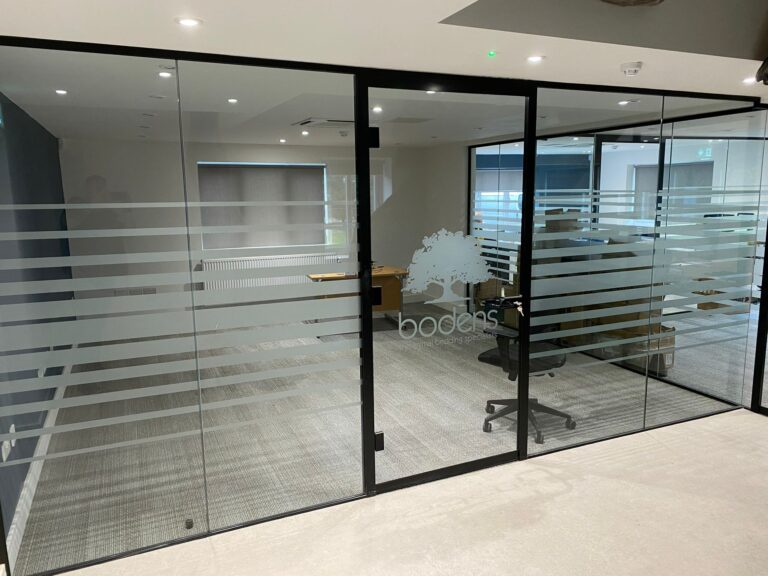Create an office floor that works for your business
Designing an office floor that works for your business in the UK involves careful planning to meet the specific needs and goals of your organization. Here are key considerations and steps to create a functional and efficient office layout:
1. Understand Your Business Needs:
– Identify the unique requirements of your business. Consider the nature of your work, team dynamics, client interactions, and any specialized areas needed for your industry.
2. Define Workspaces:
– Divide the office floor into different Glass office partitions leeds workspaces based on the nature of tasks and team dynamics. This may include open workstations, private offices, meeting rooms, collaborative areas, and breakout spaces.
3. Prioritize Collaboration:
– Create spaces that foster collaboration. Design collaborative zones with comfortable seating, whiteboards, and technology support to encourage teamwork and creative discussions.
4. Maximize Natural Light:
– Take advantage of natural light by placing workstations and common areas near windows. Natural light contributes to a positive work environment and can enhance employee well-being.
5. Flexible Workstations:
– Choose flexible workstations that can adapt to changing needs. Consider adjustable desks, modular furniture, and versatile layouts to accommodate different work styles and team sizes.
6. Incorporate Technology:
– Integrate technology seamlessly into the office design. Ensure proper placement of power outlets, data ports, and audio-visual equipment to support the technological needs of your business.
7. Provide Quiet Areas:
– Designate quiet areas for focused work. This can include individual workstations or quiet rooms where employees can concentrate without distractions.
8. Employee Amenities:
– Consider employee well-being by incorporating amenities such as a kitchen or break area, comfortable seating, and spaces for relaxation. A well-designed break area can contribute to a positive work culture.
9. Meeting Rooms:
– Plan for meeting rooms of various sizes to accommodate different types of meetings. Ensure that meeting spaces are equipped with the necessary technology for presentations and video conferencing.
10. Customize Office Layout:
– Tailor the office layout to your company’s culture and values. Use branded colors, artwork, and design elements that reflect your brand identity and create a cohesive visual identity throughout the space.
11. Sound Control:
– Consider acoustics in the office design to control noise levels. Use sound-absorbing materials, partitions, or strategic placement of workstations to create a comfortable and productive environment.
12. Accessibility:
– Ensure that the office layout is accessible to all employees. Designate spaces that comply with accessibility standards, including ramps, wider doorways, and accessible workstations.
13. Storage Solutions:
– Plan for sufficient storage solutions to keep the office organized. This may include individual storage units, shared storage areas, and filing systems to manage paperwork effectively.
14. Green Initiatives:
– Incorporate sustainable practices in the design. Choose eco-friendly materials, energy-efficient lighting, and consider initiatives such as recycling stations to promote environmental responsibility.
15. Future Expansion:
– Plan for future growth and expansion. Design the office layout in a way that allows for easy scalability, whether it’s adding more workstations, meeting rooms, or collaborative spaces.
16. Professional Design Consultation:
– Consult with professional designers or architects experienced in office design. Their expertise can help you optimize the layout, use space efficiently, and create a workspace that aligns with your business goals.
17. Employee Feedback:
– Gather feedback from employees during the design process. Consider their preferences, work habits, and suggestions to create an inclusive and employee-centric office environment.
18. Compliance with Regulations:
– Ensure that the office layout complies with local building codes and regulations. This includes considerations for fire safety, accessibility, and other legal requirements.
19. Testing and Iteration:
– Test the office layout with a small pilot group before implementing it company-wide. Gather feedback, assess the functionality, and be open to making adjustments based on the experiences of the pilot group.
20. Create a Positive Culture:
– Use the office layout to reinforce a positive company culture. Consider dedicating space for team celebrations, recognition, or other cultural initiatives that contribute to a positive and motivating work environment.
By considering these key factors and involving professionals in the design process, you can create an office floor that effectively supports your business objectives and enhances the overall work experience for your team in the UK.
Contact info:
GLASS PARTITIONS NORTH WEST
4 West one 100, Leeds, LS1 4LT
Phone: 0113 347 1984
Email: kpceilingsltd@gmail.com
Website: https://glasspartitionsinleeds.co.uk/


